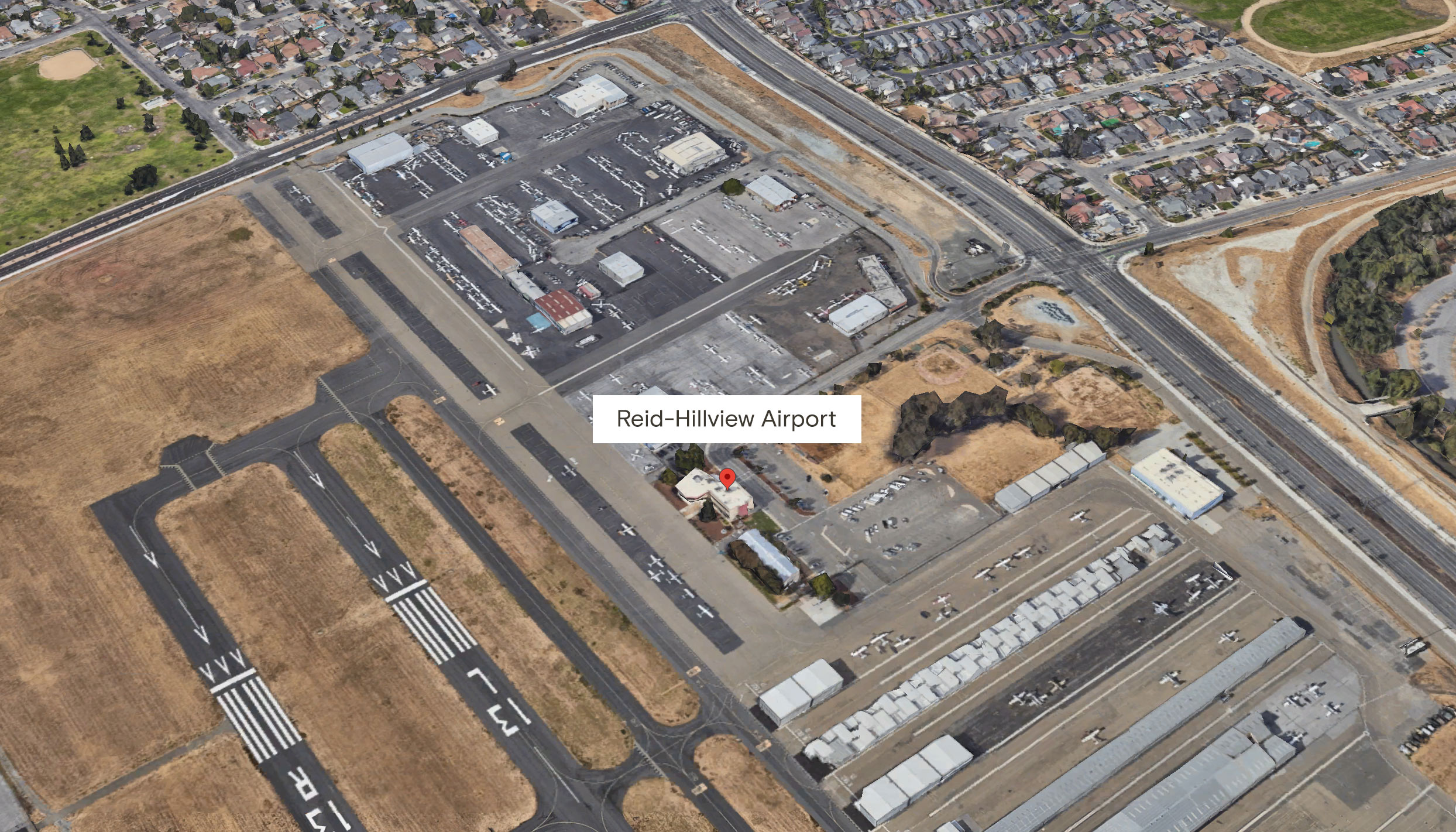Optimistic that President Joe Biden’s administration will take action to address the largest remaining source of airborne lead emissions in the country, a coalition of environmental advocacy organizations joined forces with California’s Santa Clara County on Tuesday to press the Environmental Protection Agency, or EPA, to classify leaded aviation gasoline air pollution as a danger to public health and the environment. An EPA-issued finding on this matter would allow the federal government to propose regulatory standards to address the harm caused by a highly toxic additive in aviation fuel.
Environmental advocates have petitioned the EPA to make this decision, known as an endangerment finding, for nearly two decades. They argue that the move is long overdue, given decades of scientific evidence demonstrating the harms of lead exposure, particularly for children.
“It’s unconscionable to think about the hundreds of thousands of children that have been exposed to lead over all of these years from airport activity,” said Jonathan Smith, a senior attorney with the nonprofit Earthjustice, which is representing Friends of the Earth, one of the original petitioners to the EPA, as well as Oregon Aviation Watch, the Montgomery-Gibbs Environmental Coalition, the Center for Environmental Health, and the Alaska Community Action on Toxics. (Disclosure: Earthjustice is an advertiser with Grist. Advertisers have no role in Grist’s editorial decisions.)
In a letter accompanying the petition to EPA Administrator Michael Regan, these organizations argued that leaded aviation gasoline emissions exacerbate environmental injustices faced by children of color who are already disproportionately burdened by chemical exposure. Black children are disproportionately burdened by lead exposure nationwide, and Latino children are disproportionately burdened in California. A majority of the 50 general aviation airports with the highest volume of lead emissions are located in communities of color, according to the letter. The Biden administration has pledged both to prioritize environmental justice issues and to reduce childhood lead exposure. The coalition hopes these commitments will make Regan receptive to their call for action.
“Lead poisoning is widely regarded as an environmental justice issue,” said Smith. “So we do call on the Biden administration to recognize this … and prioritize it as the environmental justice issue that it is.”
Under the Clean Air Act, the EPA regulates emissions from aircraft and the use of lead in gasoline, including automotive gasoline additives, which were phased down beginning in the 1970s. The agency subsequently banned the sale of leaded gasoline for on-road vehicles in 1996, but it allowed the continued use of lead in aviation fuel, known as avgas. This leaded fuel is used in the roughly 170,000 piston-engine aircraft estimated to be in use nationwide, including airplanes and helicopters, which operate out of more than 13,000 airports. These small, gasoline-powered general aviation aircraft comprise the largest single source of lead air emissions in the U.S., according to 2017 data from the EPA, and generated 468 tons of emissions that year. They constitute about 70 percent of total lead air emissions nationally, according to a congressionally-mandated report issued earlier this year by the National Academies of Sciences, Engineering, and Medicine. More than 5 million people, including 363,000 children under age 5, live within 500 meters of these airport runways, and more than 160,000 children attend school in these areas, according to a 2020 EPA analysis.
Marcie Keever, the legal director of Friends of the Earth, which previously petitioned the EPA to make an endangerment finding and subsequently filed a lawsuit in 2012 over the agency’s “unreasonable delay” in responding to the petition, told Grist that these communities of color are burdened not just by pollution from these airports, but also from nearby industrialized zones that contaminate the air with multiple pollutants.

Lead particles can remain for decades longer in the soil of surrounding communities, leading to continued exposure to children who grow up or attend school in these areas. Keever pointed to a recent study commissioned by the Santa Clara County Board of Supervisor examining the blood lead levels of children living near the county-owned Reid-Hillview Airport in San Jose. The study found that the continued use of leaded aviation fuel has contributed to increased blood lead levels, particularly for children who live within a half-mile of the airport, which is surrounded by a population of more than 50,000 residents. Additionally, children who live downwind of the airport have substantially higher blood lead levels than children who live upwind of the facility. The margin of difference is roughly equal to the measured difference between children who were tested at the peak of the Flint water crisis compared to children who were tested before the city’s water supply was contaminated by lead.
“I’m thankful for the decision-makers that have stepped up here [in Santa Clara County], even in this very hyper-local context, to say enough is enough,” said Keever.
Santa Clara County Counsel James R. Williams told Grist that, given the scientific consensus that there is no safe blood lead level, the decision by the county to join the endangerment finding petition was straightforward. It’s not the first time the county has taken a stand against lead exposure. Williams’ office led a nearly 20-year battle on behalf of Santa Clara County and nine other plaintiffs in a landmark legal case that held former lead paint manufacturers accountable for promoting lead paint for use in homes despite its known toxicity. The 2019 settlement led to a $305 million payout to 10 California counties and cities to address lead-paint hazards in homes across the state.
In the case of leaded aviation fuel, Williams said the battle for regulation will be fought on both federal and local fronts. “We’re under no illusions that it’s going to happen in 24 hours, and in the interim we have thousands of children whose lives and livelihood is at stake now,” he told Grist.
Seeking a more immediate remedy, the Santa Clara County Board of Supervisors voted unanimously last week to ban the sale of leaded avgas at Reid-Hillview Airport and to press the Federal Aviation Administration, or FAA, to close the facility earlier than 2031, when conditions connected to FAA grant funding are set to expire. Williams expects the FAA to oppose both efforts, but his office plans to continue to press them to take action.
“We can’t, then, as a local community, sit by and leave children exposed with permanent damage and permanent harm while the federal government takes however long it may take,” said Williams.
In its petition, the coalition makes the case that leaded avgas meets the criteria required by the Clean Air Act to make an endangerment finding. This includes a determination that leaded avgas emissions from piston-engine aircraft contribute to air pollution, and that lead air pollution can be reasonably anticipated to endanger the public’s health or welfare. Given the level of evidence required — for example, if emissions contribute even a small percentage to that pollution, the standard can be met — the finding could have been made decades ago, according to Smith. The coalition recognizes that the EPA is facing many pressing challenges given the environmental regulations that were rolled back under the Trump administration, but given the existing research, Smith said the endangerment finding is essentially teed up for a decision.
“Everyone knows that lead is harmful, everyone knows that these aircraft are the major source of lead emissions into the air. The EPA has all the studies it needs at the ready; all it needs to do is just cross the finish line and make this endangerment finding,” said Smith.
By law the EPA is required to respond to the petition by either denying or granting the petition’s demand. It’s a decision that Keever hopes will be made promptly and affirmatively. Even if the EPA decides to move forward with the finding, it would trigger a multi-year process involving hearings, the final endangerment finding, then rulemaking to adopt standards in conjunction with the FAA for regulating and mitigating emissions. Keever noted that while the staff at the EPA’s Office of Air and Radiation diligently continued to study the issue during the Trump administration, the ultimate decision to move forward will depend on the political will of those leading the agency.
“[The staff at the Office of Air and Radiation] have dotted every i and crossed every t over and over again, and the problem seems to be the political decision-makers at EPA, no matter the administration,” said Keever. “Unfortunately, we’re in a situation where we’ve delayed and delayed and delayed, so we’re still going to have a process in front of us.”
In the intervening years, Keever has encouraged fellow advocacy organizations to push for unleaded fuel options at general aviation airports — which some facilities like the San Carlos Airport in San Mateo County, California, have already adopted — as well as additional research to find fuel alternatives. Part of that effort includes raising the general public’s awareness of a toxic contaminant that is invisible and being spewed by small general aviation airports that aren’t often viewed as sources of harmful pollution.
President Biden’s commitment to addressing environmental justice and childhood lead poisoning has left the coalition hopeful that leaded aviation fuel will finally get regulatory attention from the EPA.
“It’s not a matter of more studies, it’s not a matter of the science of lead, it’s not a matter of needing to assess anything,” said Williams. “It’s a matter of the political will to actually issue the regulation and know that the market will follow, just as it did everywhere else.”



